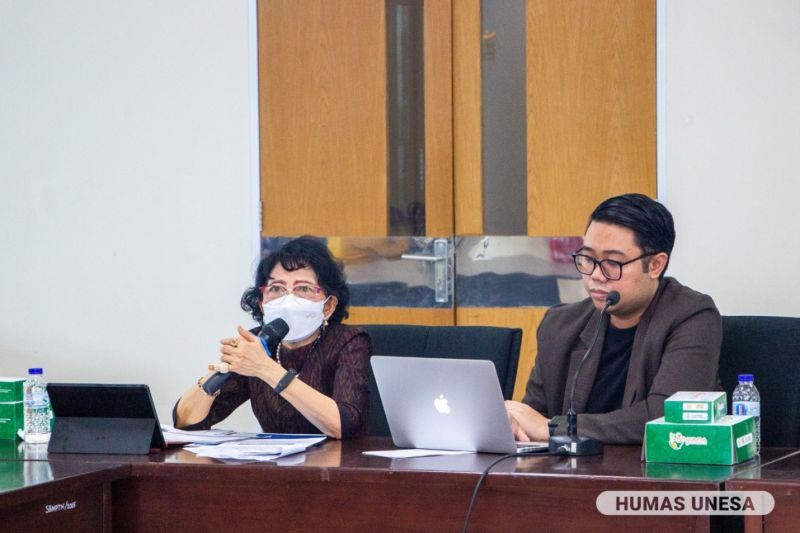UNESA's DIC Commitment to Strengthen Human Resources to Improve Qualitative Research in the Field of Disability

Unesa.ac.id., SURABAYA-Universitas Negeri Surabaya (UNESA) through the Disability Innovation Center (DIC) held a Workshop on Qualitative Data Analysis for Researchers of Disability Innovation Center in Room 901, 9th Floor of UNESA Rectorate Building Campus 2 Lidah Wetan, on Thursday, October 31, 2024.
Head of the Disability Innovation Center (DIC), Budiyanto said that this activity aims to improve the competence of DIC researchers from various departments in the field of qualitative analysis for disability.
Dozens of participants who took part in this activity were DIC researchers from various departments and lecturers of Special Education (PLB). The professor of disability revealed that the majority of research so far conducted by UNESA is dominated by quantitative research.
Therefore, the activity that presented Pennee Narot from Khon Kaen University Thailand is expected to guide UNESA lecturers and researchers to enrich qualitative research, especially related to disability issues.
The workshop was attended by researchers in the field of disability and other related fields within UNESA.

Pennee started the session by explaining the importance of qualitative methods in understanding complex data, such as the study of parenting children with disabilities.
According to her, qualitative methods are able to provide a more in-depth analysis because they explore the reasons behind a phenomenon. She also emphasized the importance of content and thematic analysis to explore individual perceptions through a “who says what to whom, and with what effect” approach.
He explained the main difference between qualitative and quantitative methods in terms of focus. Quantitative methods rely on numerical data, while qualitative methods provide an in-depth understanding of an issue.
Furthermore, Pennee explained that content analysis includes two main strategies, namely systematization of coding and categorization, to identify trends or patterns in the data.
“In this process, data is classified into small categories called “codes,” which are analyzed for frequency to obtain specific results. This coding approach allows researchers to find new findings that are relevant to the public,” he explained.

Pennee also explained four general approaches that are often used in qualitative research, namely, narrative explores the story of one individual and phenomenology explores the experiences of many individuals.
In addition, grounded theory studies phenomena experienced by many individuals, while case studies conduct in-depth observations in a particular case.
“Sometimes when researching, paying attention to field notes or the environment during observation is important. There may be information that cannot be revealed through interviews alone,” she explained.
In addition, she reminded that disability education is not only for people with disabilities, but also for those around them who need understanding and support in dealing with their special needs.
At the end of the session, Pennee emphasized the importance of a mixed-method approach in research, as she believes it provides a more comprehensive basis for explaining study results. She hopes that what was presented can be useful for future research."[*]
***
Reporter: Fatimah Najmus Shofa (FBS), and Sindy Riska Fadillah (Fisipol)
Editor: @zam*
Photo: UNESA HUMAS Team
Share It On: